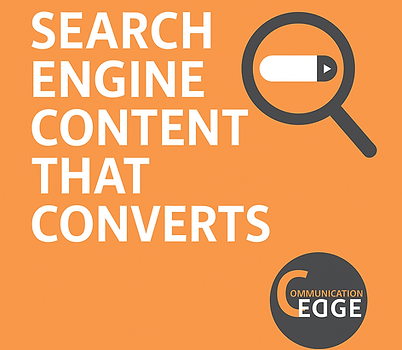

Data Driven Marketing Guides
These Guides Help MD's / CEO's understand Fractional CMO's , how the work, what they do, how they set up data driven marketing.
Each Guide is a summarised PDF to cut straight to the chase and answer the key questions.
All these guides are constructed from Fractional CMO, Part Time CMO or Interim case studies, we know they work because they have been tested.
One size definitely does not fit all in data driven marketing, each company, industry, competitor set and keywords are different so these need adapting to each SME case once the Free Marketing Health check is complete.

Why SME's need a fractional CMO?
The Benefits:
30-40% Cost reduction V Agencies
10X faster more agile action
15X more content produced
20X better value than agencies

What a Fractional CMO actually does?
The six areas where you can expect a fractional CMO to have an impact: Audit what exists, The KPI's required to succeed, The plan for measurable growth, the execution of the plan, measuring success and reporting.

What A Fractional CMO does?
Top line Guide
As opposed to the checklist which goes into 17 pages of detail this Guide covers what a CMO does daily, weekly and monthly at a high level.

Conversion Rate Optimisation
This how to guide takes you through how to construct landing pages that convert traffic into leads.
From the Strategy and focus, through how to optimise a page, the design and experience, building trust and credibility, to how to test and continually tweak performance and the measurement and reporting.

Pay Per Click Google Ad Campaign Checklist
Creating a PPC Campaign from the start "An MD's performance checklist" is a guide to
-
Set up and targeting
-
Ad copy and creative,
-
Landing Page alignment,
-
Conversion rate optimisation,
-
Budget efficiency & ROI and
-
Continuous improvement.

Search Engine Content that converts
This Guide covers the basics:
The Foundations
Search "Intent"
Content that converts
Enquiry to Deal Funnel
Measurement and Continuous Improvement
Strategy and alignment

Lead Generation Symptoms of Pain
A checklist for SME's to assess if they need a fractional CMO:
-
Unclear ROI from Agencies?
-
Poor lead quality?
-
Fragmented Data and tracking?
-
Slow execution?
-
High overheads or costs?
-
What the shift from Agency dependancy to data driven control looks like?

Establishing a culture of data driven marketing
Why Culture comes before data?
-
Ownership of the numbers
-
Accountability
-
Responsibility for performance
-
Personal Growth
-
Momentum through self learning and motivation
-
Business Growth Mindset
-
Marketing as an investment not a cost!

Looker Studio V Databox Consolidated Data Reporting
How the two solutions compare to set up the entire enquiry funnel dashboards on a micro level and board level:
This is the data driven marketing solution every business needs to:
- Learn from
- Optimise Marketing efficiency
- Generate the maximum ROI from your marketing investment.
UNLESS this is in place you are simply burning money with no accountability or responsibility.

Full Marketing Funnel Checklist
Top of Funnel
What you should Track?
Which Metrics?
Which Tools?
Who should own them?
How often they are formally reviewed?
Good marketeers live by these numbers and are guided by them by the day & hour.
Its how they learn, by trying to understand how to influence the numbers.
Reporting is not a monthly task its a data stream that quenches every true marketeers thirst for knowledge.

Fractional CMO & Interns V Agency
Full Checklist
Here is a simple checklist that covers:
• Cost and Flexibility
• Strategy V Activity
• Speed, Agility & Execution
• Data Measurement & Accountability
• Communication and Transparency
• Cultural Fit & Long Term Value
• Real Outcomes
Data Driven Marketing FAQs for SME's
1. What is data-driven marketing?
It’s a marketing approach that bases every decision on evidence — real performance data — rather than assumptions. It means campaigns are designed, measured, and optimised using metrics that prove ROI.
2. Why is data-driven marketing important for SMEs?
Because every pound matters. SMEs can’t afford waste. A data-driven approach ensures every activity links directly to measurable outcomes like leads, conversions, and pipeline growth.
3. How does it differ from traditional marketing?
Traditional marketing relies on intuition and generic reporting. Data-driven marketing relies on metrics, attribution, and transparency — letting you see exactly what’s working and what’s not.
4. What data sources are typically used?
CRM, Google Analytics 4, social media insights, SEO platforms, paid campaign data, and email automation tools — all consolidated into one reporting dashboard such as Looker Studio or Databox.
5. How do you turn raw data into actionable insights?
By combining automated reporting with human interpretation. The data shows “what happened,” but analysis explains why — and guides next-step strategy and optimisation.
6. What KPIs should SMEs focus on?
Key metrics include traffic quality, conversion rate, cost per lead (CPL), customer acquisition cost (CAC), pipeline value, lead-to-close ratio, and lifetime value (LTV).
7. How can data-driven marketing reduce wasted spend?
It highlights which channels deliver the best ROI — and which don’t. Budgets can be redirected toward high-performing campaigns and stopped on under-performing ones quickly.
8. Is data-driven marketing only for large companies?
No. In fact, SMEs benefit most — because the model brings enterprise-level visibility at SME-level budgets, using tools that automate 80% of the manual work.
9. What tools help SMEs adopt a data-driven approach?
Platforms like Looker Studio, HubSpot, GA4, SEMrush, and SERanking connect directly to your marketing stack for real-time reporting.
10. How long before results become visible?
Most SMEs see improved clarity and faster decision-making within 30 days, and performance improvements within 90 days, once measurement frameworks are fully in place.
11. How does AI fit into data-driven marketing?
AI speeds up analysis, forecasting, and reporting — finding patterns faster than manual teams can. It also automates repetitive tasks, freeing humans for strategic thinking.
12. How do dashboards help my board understand marketing performance?
Dashboards translate complex data into visual insights — showing CAC, ROI, and growth trends clearly. They turn marketing from a cost centre into a measurable growth function.
13. What’s the link between data quality and marketing performance?
Poor data = poor decisions. Clean, structured, compliant data ensures campaigns reach the right audience with relevant messaging, improving conversion rates.
14. How do I ensure compliance with GDPR and data privacy rules?
By maintaining opt-in consent, documenting data flows, and using platforms that comply with GDPR/PECR. Transparency builds trust with both regulators and customers.
15. Can data-driven marketing work with a small team?
Yes. With automation, interns or junior staff can manage data collection while senior marketers or Fractional CMOs handle analysis and decision-making.
16. What does a “measurement framework” include?
Clear goals, defined KPIs, consistent data capture, agreed dashboards, and regular review cycles — all documented so progress can be tracked and accountability shared.
17. How often should data be reviewed?
Daily for campaign performance, weekly for optimisation, and monthly for board-level summaries — ensuring agility and long-term insight.
18. How can data-driven marketing improve customer experience?
By analysing behaviour and engagement data, you can personalise messages, timing, and offers — improving relevance and retention.
19. What are the most common pitfalls SMEs make?
-
Tracking too many irrelevant metrics
-
Ignoring attribution models
-
Failing to act on insights
-
Letting data sit unused in silos
20. What’s the first step to becoming data-driven?
Start with a Marketing Health Check — audit your current performance, identify data gaps, and build a measurement roadmap aligned to commercial goals.
